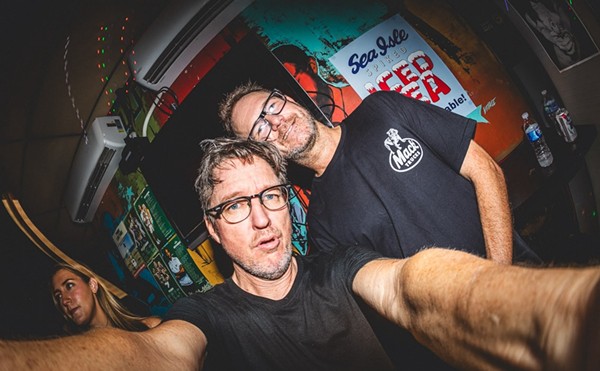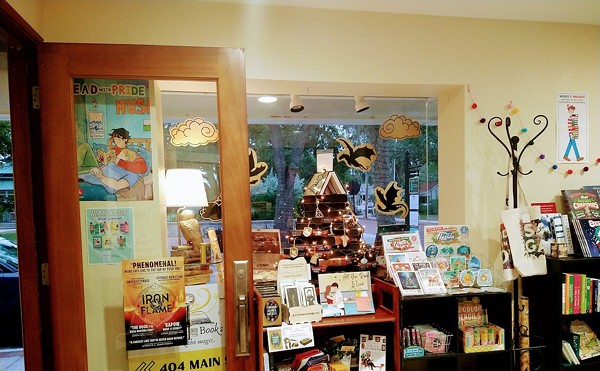If you need proof that there’s more than one way to see a painting, look no further than Gene Davis’ art. One popular school of thought suggests that paintings are most powerfully experienced in a glance. (Maybe that’s why the average museum visitor spends less than 20 seconds in front of an artwork, the bulk of which might even be devoted to reading a wall label.)
Davis, an American painter who died in 1985, saw his paintings as akin to jazz compositions, and he intended them to be experienced as vibrant with rhythm and color intervals. Renowned for his abstract compositions of vertical stripes, he encouraged viewers to read the bands of color in them successively — blues then reds then greens — as if sounding out musical notes by plucking strings or striking piano keys. “Enter the painting through the door of a single color, and then you can understand what my painting is all about,” Davis said, according to a Smithsonian biography.
Color Acting, an exhibition at the Museum of Fine Arts, St. Petersburg, on view through September, highlights the importance of such deep thinking — or, perhaps more to the point, feeling — about color to modern and contemporary abstraction. Drawn mostly from the MFA’s permanent collection by the museum’s new contemporary art curator, Katherine Pill, the exhibition features works by 24 (mostly American) artists including Davis, Josef Albers, Frank Stella, Joan Mitchell, Helen Frankenthaler and Richard Anuszkiewicz — icons of 20th century art — as well as recent works by Jessica Eaton, Jessica Labatte and Pierre Mabille. As a debut for Pill, as well as some collection works that haven’t been on rotation for a while, if ever, the show is a breezy success — accessible to the most casual of viewers but quietly smart and self-assured.
The exhibition opens with a pair of works by Albers, without whom it would be virtually inconceivable to imagine an exhibition about color in art after 1950. Happily, the MFA collection yields a 40-by-by-40-inch silkscreen from 1973, “I-S j,” one of many in which Albers explored relationships between colors and their effects on perception. In this particular image he nests a series of green squares of waning saturation and lightness around a center block of pure clover-green; as the surrounding squares fade to velvety black, the bright green hovers in space ethereally. Albers’ creative practice was devoted to making countless variations of such color meditations, the best known making up his series of paintings and prints called Homage to the Square. After training and teaching at the German Bauhaus, he taught painting and design for decades in the U.S. at Black Mountain College, where his students included Robert Rauschenberg and Cy Twombly, and Yale.
Even artists who didn’t work with Albers were likely to have heard about his influential book, Interaction of Color (1963), or his retrospective — the first ever granted to a living artist — at the Metropolitan Museum of Art in 1971. Many of the exhibition’s other artists are working either directly in his wake or in an adjacent channel of modern color fascination. There’s Anuszkiewicz — literally, one of Albers’ students at Yale — a founder of Op Art, whose “Inward Eye #5 (1970)” and “Volumes (1972)” play with electric pinks, oranges, yellows and cool blue-greens to create illusions of dimensionality and strong vibrations. (These are paintings so vivid that they generate echoes on a viewer’s retinas.) And Hans Hinterreiter, a Swiss painter and printmaker strongly influenced by the color theory of German scientist Wilhelm Ostwald.
Color Acting unearths a quartet of his prints, never before exhibited at the MFA, which are remarkable for their complex geometry of interlocking designs. Color field painting gets its due in big canvases by Frederic Karoly and Ludwig Sander, both New Yorkers who enjoyed success in the 1960s, and Leon Berkowitz, a member of the Washington Color School group along with Davis.
One of the exhibition’s big delights is its interweaving of recent work by three artists — Eaton, Labatte and Mabille — among the comparatively historic works. Eaton, a 35-year-old Canadian, specifically riffs on Albers’ legacy in her photograph “cfal 279” (2012). To create the image, and others like it from her series Cubes for Albers and Lewitt (hence, “cfal”), she casts a common studio pedestal in the role of Albers’ receding cube, using multiple exposures to nest the box inside itself and manipulate its color. Sans digital technology, the endeavor becomes a coyly low-tech studio game that produces a high-concept joke. At the other end of the spectrum, Mabille uses pastels to draw layers of elliptical shapes in sometimes harmonious, sometimes dissonant hues on paper. Energetic to the point of cacophony, the drawings offer a very different (and thrilling) experience of the musicality of color in comparison to Davis’s staid stripes.
Soon we’ll be thinking of these kinds of encounters — gratifying brushes with contemporary art at the MFA — as one of the pleasures of having Katherine Pill around. The museum has long done a fine job of including the art of the present in its wide-ranging programming, but having a curator devoted to the period raises the bar. Pill comes to the position, which is being funded by an endowment established last year with a gift from Hazel and William Hough, with excellent credentials, perhaps the most unusual of which is having run an art gallery out of her Chicago apartment for nine months. Called Concertina, the space even nabbed a spot on Time Out Chicago’s list of best gallery exhibitions in 2009. This tells me that as a curator Pill has experience getting a lot done with finite resources (consider Color Acting a case in point) and a real yen for the kind of legwork that brings interesting, innovative and as-yet-unknown art into view — all of which we could use more of around here.














